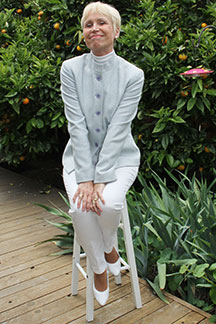“I am convinced that BER will be put into operation in October 2020,” Engelbert Luetke-Daldrup recently said of the troubled Berlin-Brandenburg Willy Brandt Airport. Daldrup became chief executive of the beleaguered airport in March 2017.
So far, the grand opening was postponed eight times. Originally slated to open in 2011, poor planning and subcontracting, recurring changes in design, flawed construction plans, shoddy workmanship, major technical problems, corruption and numerous management changes are only part of the problem. BER is a joint project of the city-state of Berlin, the regional government of the State of Brandenburg and the Federal government of Germany. Too many inexperienced cooks stoking the fire are the other part of the trouble.
Opening of BER delayed eight times
Planning for BER began after the fall of the Berlin Wall in 1989. The newly-reunified capital of Germany clearly needed an airport with greater capacity than its existing Tegel Airport (in former West Berlin) and Schoenefeld Airport (in former East Berlin) combined. Authorities decided to replace the two existing airports with the new International Airport BER. Groundbreaking took place in 2006. Completion was slated for 2011. What happened then is almost comical. The opening of BER was postponed eight times for a myriad of reasons: Faulty fire and smoke alarm systems, escalator issues, too few check-in counters and baggage reclaim carousels, lights that could not be switched off, and many other issues.
2011 – Opening postponed to 2012.
2012 – Opening postponed to March 2013, then October 2013
2013 – Opening postponed to 2014.
2014 – Opening postponed to 2016, maybe 2017 or 2018.
2016 – Opening postponed to 2017 or 2018.
2017 – Opening postponed to 2018, 2019 or possibly 2020.
2018 – Opening postponed to 2020.
Ongoing Maintenance of unfinished BER
Every month the airport just sits there unused, it racks up millions of euros in maintenance and upkeep costs. The unfinished BER has to be heated, lit and maintained. Construction workers have to be paid. Empty trains have to run into the airport station every day to keep it ventilated. In early 2018, all 750 arrival and departure monitors had to be replaced. They had reached the end of their service life, having been switched on for six years, even though the airport was closed.
BER is not big enough
Sceptics believe that even if the airport opens on time, it will immediately face a problem: it’s not big enough. The German capital is now the second most heavily populated city in Europe after London, which is served by six international airports. BER’s engineering advisor Dieter Faulenbach da Costa cautions that more people than previously expected will be moving through the main terminal. More passengers will arrive through the railway station in the basement. Smoke and fire emergency systems will have to be adjusted once again to accommodate the increase. The adjustments will take additional time, making a 2020 opening unlikely.
Ditch BER and start over?
Faulenbach da Costa believes that BER was too small from the beginning, but the agencies wanted to save money. Even airport CEO Luetke-Daldrup admits that BER will not be able to handle more than 33 million passengers in 2020. And that number is equal to the capacity of Berlin’s two existing airports, Tegel and Schoenefeld, both of which are already bursting at the seams. As it stands, the expected cost to build BER will be 3.5 times the initial budget. A Lufthansa executive predicts that BER will never open. It may just turn out to be Berlin’s stillborn baby.
For a sneak peek at the first 20+ pages of my memoir, Walled-In: A West Berlin Girl’s Journey to Freedom, click “Download a free excerpt” on my home page and feel free to follow my blog about anything German: historic or current events, people, places or food.
Walled-In is my story of growing up in Berlin during the Cold War. Juxtaposing the events that engulfed Berlin during the Berlin Blockade, the Berlin Airlift, the Berlin Wall and Kennedy’s Berlin visit with the struggle against my equally insurmountable parental walls, Walled-In is about freedom vs. conformity, conflict vs. harmony, domination vs. submission, loyalty vs. betrayal.

















